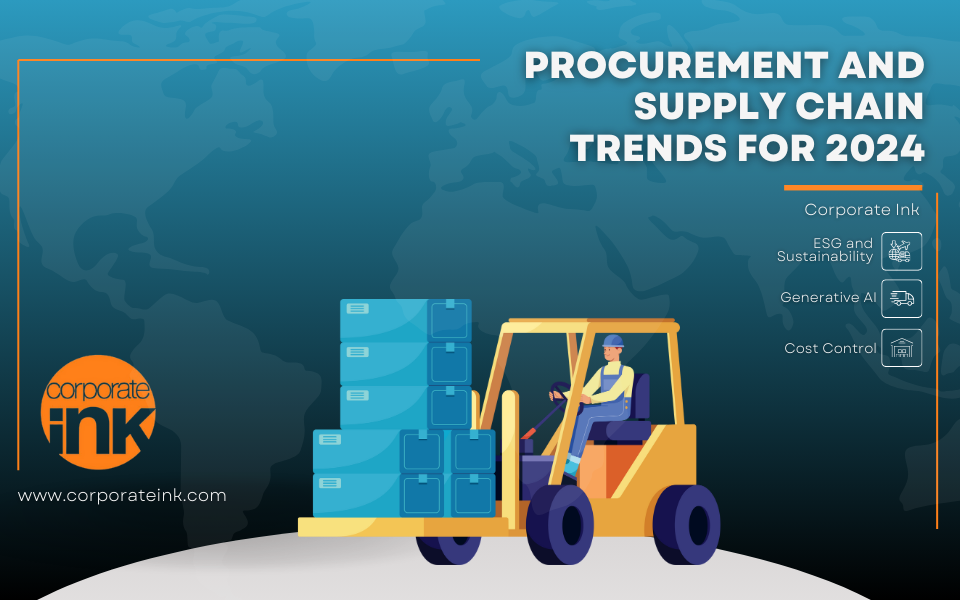Modern Supply Chains: Four Ways Millennials Have Changed Everything
December 3, 2015
Marketing to procurement and supply chain buyers: How tech providers can stand out in a crowded, copycat market
August 29, 2016 Chipotle’s months-long E. coli outbreak has had everyone talking about food safety. Between the media reporting a dramatic dip in sales, experts commenting on the future of the business and some consumers absolving their loyalty to the brand out of fear of getting sick, everyone seems to have taken a position on the scandal. In fact, Chipotle reported its first ever quarterly loss just this week, indicative of reduced sales from wary consumers.
Chipotle’s months-long E. coli outbreak has had everyone talking about food safety. Between the media reporting a dramatic dip in sales, experts commenting on the future of the business and some consumers absolving their loyalty to the brand out of fear of getting sick, everyone seems to have taken a position on the scandal. In fact, Chipotle reported its first ever quarterly loss just this week, indicative of reduced sales from wary consumers.
But a question remains: How could a brand that prides itself on fresh, quality ingredients have gotten into such a crisis in the first place?
Although there were a variety of factors at play, Chipotle’s local sourcing model, which uses a variety of disparate, small suppliers, was likely a key contributor. In theory, meeting market demand for greater food transparency with local sourcing initiatives sounds like a great idea, but for national chains like Chipotle, it’s incredibly difficult to be big and act small.
Pros and cons of localized sourcing
Local sourcing concepts are designed to satisfy local consumer preferences by offering them specialized products, and support the surrounding community by investing in small farms and businesses. By making it easier for buying companies to travel to suppliers for on-site inspections and develop close relationships with them, local sourcing gives companies greater insight into their supply base and allows them to more accurately predict delivery times and supply and demand issues.
On the flipside, a centralized sourcing model gives buying teams greater control of fewer operations. Contamination often happens in the field, in processing facilities or during handling at restaurants, making it difficult to trace the origin, even when supply partners are close to home. Having a centralized food source exposes ingredients to fewer outside elements, making quality control easier. This approach includes a formalized system that identifies employees authorized to make a purchase order and follow the order through to delivery, outlines strict criteria for selecting vendors and specifies precise quality standards.
Internal controls and regulatory requirements have been in place for years to mitigate the risk of contamination and recalls to meet the market’s need for food safety procedures. So, how do you establish this type of operational integrity in a farm-to-table, local sourcing environment?
Moving from a centralized Model: Maintaining food and operational integrity
It all comes down to supply chain visibility. Whether global or local, supply chains can be quite complex, and the only way to ensure food integrity is to make sure you can see all the way through the supply chain, literally from the farm to the table. Sometimes the basics can be the most helpful – they’re fundamental for a reason:
1. Buy what you know: Developing trusted, personal relationships with suppliers is arguably the most important thing buying teams can do to ensure they’re getting exactly what they’ve asked for. Having this mutually beneficial relationship will help companies meet local sourcing initiatives and set the stage for how both parties communicate before, during and after a crisis.
2. Collaborate often: Once trusted supplier relationships are established, it’s important to continuously work together to make improvements, create contingency plans and resolve issues. Although risk can’t be eliminated completely, proactively identifying potential contamination and supply base issues from both the supply and demand side will prove to be an effective strategy for squashing potential disruptions before they occur.
3. Have a back-up plan: When food recalls and contaminations occur, teams may need to terminate a supplier contract, which makes having a back-up plan essential to avoid costly disruptions. Understand what sourcing options, whether local or global, are out there so the team can pull the trigger on a new order whenever needed. There’s nothing worse than a last minute scramble or having to buy ingredients under unideal terms or product specifications.
There’s no one-size-fits all approach to sourcing. A sourcing strategy should align with the company’s overall strategic business goals and objectives, and the one that works best for a team may include local and global sourcing concepts. By developing strong relationships with suppliers and proactively collaborating with them before issues occur, teams can turn more risky models into one of their strongest assets.
To learn more about food safety and integrity, read the latest from our client, Intesource: Sourcing Transparently: A Key Ingredient for Brand Loyalty and Trust





